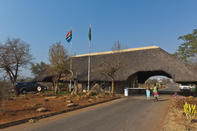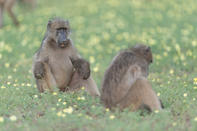Visiting South Africa’s Wildlife Areas

South Africa boasts an impressive collection of wildlife regions and game parks.
From high grasslands in the world-famous Kruger National Park to sand dunes in coastal parks like Sodwana and desert areas in the Kalahari, South African National Parks offer it all!
Each of the South African national parks is home to its own myriad of wildlife, birdlife and an incredible density of flora and fauna.
When visiting one of South Africa’s national parks, follow this guide to ensure that you have a memorable safari experience.
Keep the Balance

South Africa has one of the proudest and longest conservation records in the world. What characterizes most of the 17 national parks and many provincial reserves in South Africa from those in the rest of Southern Africa is pretty much what separates the country from its neighbours: the parks are highly organized and tightly managed by conservation authorities under rigorous scientific scrutiny. South Africa National Parks also have good roads, plentiful and safe accommodation to suit every pocket, and excellent facilities.
In order to preserve this privilege for future generations, it's important to view wildlife with minimal disturbance and to avoid upsetting the delicate balance of nature at all costs. Remember that you're a visitor to these animals' territories, so act like you would in someone else's home respect their space.
Do Not Interfere

Nature is neither kind nor sentimental. Nothing is wasted in the great pyramid of life in the African bush: from lion and hyena to vulture and jackal to the dung beetle. Do not be tempted to interfere with these natural processes. The animals are going about the business of survival in a harsh environment, and you can unwittingly make their survival difficult. Don't get too close to the animals; you might cause alarm or influence a hunt by chasing away the prey or shielding a predator's approach.
Don't even pick up a tortoise to help it across some perceived obstacle: you have no idea what it's really trying to do, or where it wants to go. If you're intrusive, you could drive animals away from feeding and, even worse, from drinking at water holes, where they are very skittish and vulnerable to predators. That time at the water hole may be their only opportunity to drink that day.
Do Not Feed

Never feed any wild creature - not a cute monkey, not an inquisitive baboon, not a baby tree squirrel, or a young bird out of its nest. When you feed wild animals, you help to habituate them to humans, and the animals get closer to humans than they normally would. If an animal then feels threatened, the likelihood of a fatal attack increases. Feeding young birds can transfer your scent to them or to their nest.
In either case, you are ultimately signing the animal's death warrant because problem animals will eventually have to be shot and adult birds will abandon their young if they smell humans. Also, by giving food you diminish that animal's ability to feed itself. In some cases, such as where lodges throw their waste into the veld, baboons and other animals can become displaced like city tramps.
In some camps and lodges in South Africa National Parks, animals have gotten used to being fed or stealing food. The most common animals in this category are baboons and monkeys; in some places, they sneak into huts, tents, and even occupied vehicles to snatch food. If you see primates around, keep all food out of sight, and keep your windows rolled up. If a baboon manages to get into your vehicle, he will trash the interior as he searches for food and pretty much uses your car as a bathroom.
Otherwise, give them a wide berth - even vacate an area if they seem intent on being there. Like other animals, baboons and monkeys are vicious when they feel threatened or cornered, and they have huge canine teeth. A male baboon can kill a leopard, and a monkey will easily overpower you and deliver nasty wounds.
 The Kruger National Park (KNP, or simply ‘Kruger’, for short) is the premier game reserve in South Africa. Offering excellent Big Five g...
The Kruger National Park (KNP, or simply ‘Kruger’, for short) is the premier game reserve in South Africa. Offering excellent Big Five g... Addo Elephant National Park in the Eastern Cape, is the third largest national park in South Africa. This malaria-free safari destination is...
Addo Elephant National Park in the Eastern Cape, is the third largest national park in South Africa. This malaria-free safari destination is...